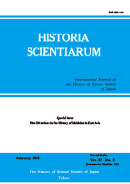Barhebraeus, one of the most significant figures in the Syriac Renaissance, who was a Syriac Orthodox prelate and polymath, and a younger contemporary of Naṣir al-Dīn al-Ṭūsī, wrote a Syriac astronomical work entitled Ascent of Mind. By comparing this work with Ṭūsīʼs hayʼa works, we notice that although Barhebraeus composed it using the structure of hayʼa works, the order of its chapters corresponds more closely to that in Zubdat al-idrāk fī hayʼat al-aflāk, a less popular Arabic hayʼa work of Ṭūsī, and, moreover, Barhebraeus did not make any reference to the Ṭūsī-couple. The reason for this peculiar selection can be found in the fact that Barhebraeus mentioned in the introduction of the Ascent Ptolemyʼs Almagest as “the most comprehensive and admirable” book, suggesting that to make his hayʼa book accord faithfully with the Almagest, he selected the Zubda since it adhered to the Ptolemaic system, and he rejected the Ṭūsī-couple because he was not interested in a concept newly added to the original content of the Almagest. From a detailed analysis of his selective editing of Ṭūsīʼs hayʼa works in the Ascent, I elucidate how different the scholarly stance of Syriac Christians towards Greek scholarship was from that of Islamic scholars.
抄録全体を表示
